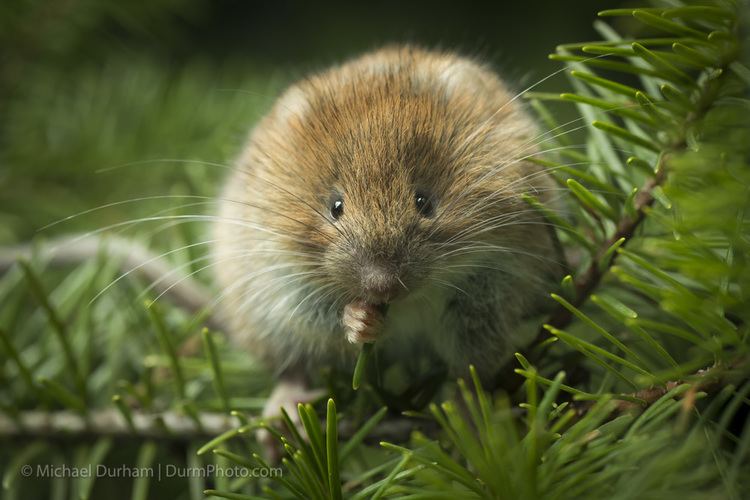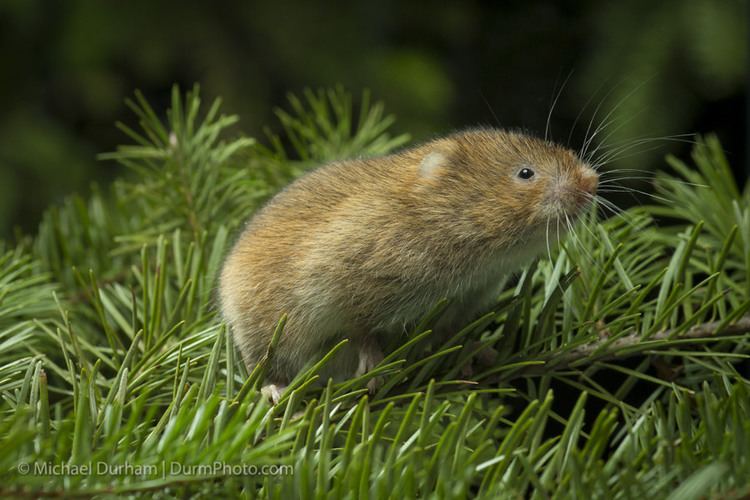Order Rodentia Genus Arborimus Higher classification Tree vole | Phylum Chordata Scientific name Arborimus longicaudus Rank Species | |
 | ||
Similar Tree vole, White‑footed vole, Heather vole, Western red‑backed vole, Mammal | ||
Camera trap quest for the red tree vole
The red tree vole (Arborimus longicaudus) is a rodent found in Oregon and California.
Contents
- Camera trap quest for the red tree vole
- Description
- Reproduction
- Predation
- Conservation Efforts
- References
Description

The red tree vole is a rodent in the family Cricetidae. It is found only in coastal forests of Oregon and northern California. They eat exclusively the needles of conifers, mostly Douglas-fir (Pseudotsuga menziesii) and occasionally other species. They often spend their lives in just one tree, and many generations will live in different parts of the same tree.

When eating Douglas-fir needles, they carefully remove the fine resin ducts (which resemble coarse, straight hairs) along each edge of the needle, discarding these or using them for nest lining. (see image below) They are nocturnal and very difficult to see, but they can be detected by finding piles or wads of these resin ducts on the ground.
Red tree voles are about 6-8 in long, including the tail. When they are young they exhibit a dull brown coat and develop a more reddish colored coat with age.
Reproduction
Red Tree voles have small litters consisting of 1 to 4 offspring and a long gestation period of 28 days compared to other Microtines. Juveniles depend on their mothers for 47 to 60 days before complete independence. Females exhibit post-partum mating where they can breed within a few days of giving birth and it is common to find two separate litters living in the same nest. During peak breeding periods (winter and spring), males disperse and have travel longer distances from home in search for females that are sexually receptive. Females tend to stay closer to their nests, therefore having smaller home ranges.
Predation
The Northern Spotted Owl is one of the Red Tree Voles' primary predators. Recent studies show that short tailed weasels are also another primary predator of the Red Tree Vole. Females are easier to detect by predators due to their maternal nests. The time they spend outside of their nests searching for food to bring back for their young also puts them at a higher risk of predation.
Conservation Efforts
Their habitats in old forests have become a concern for the species. Logging and habitat fragmentation has determined their status as vulnerable on the list of sensitive species on the Oregon coast. They are vulnerable to timber harvest due to their arboreal lifestyle and their low reproductive rates contribute to the concern of the species becoming further threatened. They are an important food source for the threatened Northern Spotted Owl and have been listed as a "survey and manage species" under the Northwest Forest Plan (NWFP) in order to help manage the area's ecosystem.
